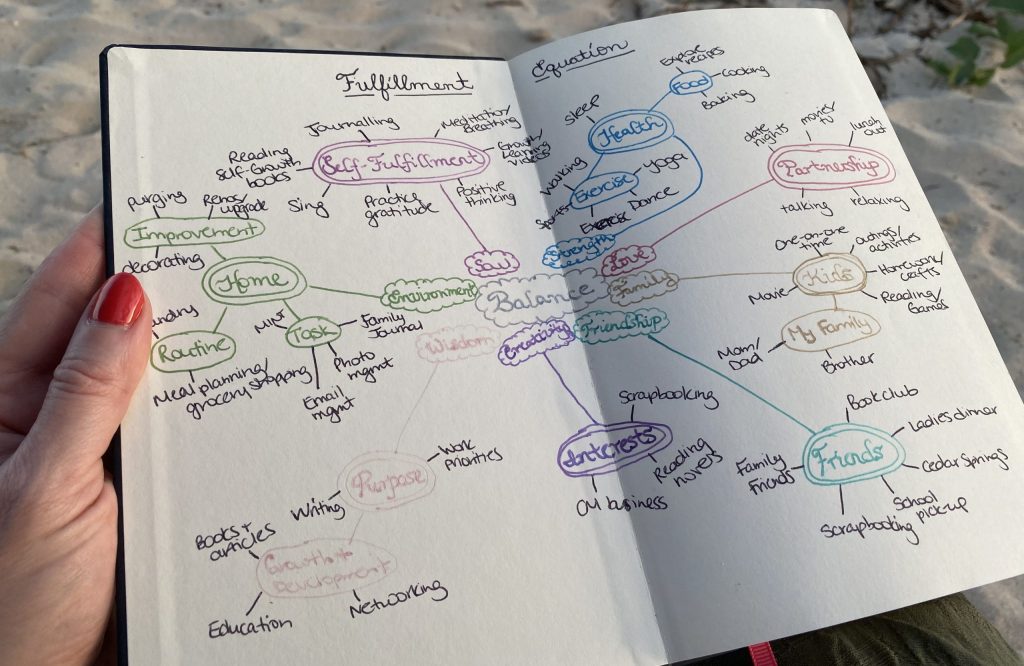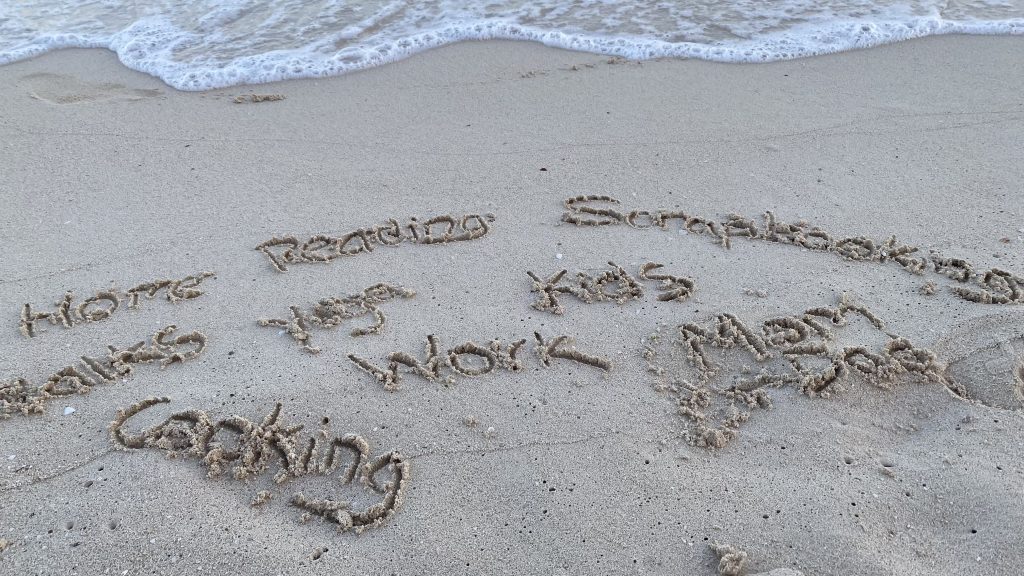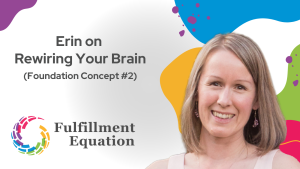
Where It All Began…
It was an otherwise perfect day. I had a week off for vacation and my family and I had made the long walk down to the lake near my parents house, our arms full of the necessities for a successful beach trip. At the time, our kids were 8, 5 and 2 so I’m sure there was whining about legs hurting from the walk and exhaustion from the effort of getting them out the door. However, I don’t remember any of that. All I recall is the feeling of the sun on our skin, the sound of the waves lapping on the shore and the peacefulness of watching my kids play in the sand as I settled into my folding chair under the shade of a beach umbrella. The idyllic scene, a blessed moment of freedom from our usual daily grind, allowed me a moment to catch my breath. I could feel the tension exhale, like the slow release of air from a gently deflating balloon. Yet, at my core remained a deep heaviness. It was like the ice was melting off the exterior, but beyond that no amount of sunshine or beach air was going to penetrate the hardened centre.
While at the time, everything I had done to that point in my life and was currently doing was just “life” and seemed manageable in the moment, looking back now I can see how it had all snowballed to become overwhelming. In 8 short years, we had been through the exhausting (and exhilarating) process of having a baby and caregiving for the little one until it was old enough to walk and talk and be diaper-free – and had done it three times. We had started new jobs, grown a business, bought a bigger house and moved, been through major renovations, a flood, trips, lost loved ones and so on. This was layered on a busy and full life before having kids – full-time work while completing a graduate degree part-time, purchase and reno of our first home, promotions, travel for work, organizing our wedding. We kept ourselves busy and engaged in all of these exciting activities and accomplishments. After all, these were the important pieces that made up life! And many of them were rewarding.
The thing is, though, that many of these things were not as consecutive as they appeared when we were doing them, they were cumulative. By that I mean that they weren’t really things that you did and then never thought about again when you moved onto the next thing – they each came with ongoing responsibilities and those responsibilities piled up. For example, a bigger house meant more space, but it also meant more to look after, more things that would need our attention and more room for clutter to build up. Each time we purchased something, everything from a big item like a car to a small item like a humidifier, it was something that served us an immediate function, but then came with the baggage of needing a schedule of maintenance, cleaning and repair. (It sounds silly for something as simple as a humidifier, but multiply it by all of the things that you own!) Taking on a promotion at work meant more responsibilities, more team members to look out for, more meetings. It was like every time we did the next “life” thing, we started a plate spinning that we couldn’t really walk away from. Which I think is why so many people experience something akin to a midlife crisis: by the time you hit the end of your 30s, you are so busy keeping all of the plates spinning that you set in motion over the previous two decades that you feel like you’ve lost the plot! What’s the point of it all?

This certainly was the case for me. I had so much to be grateful for – and I was! – but all that good we’d created was buried under the weight of keeping a thousand plates spinning. In my day to day life, this showed up as a highly-scheduled, highly-structured routine (the go-to coping mechanism for an organized person!) I would go through the motions each hour, each day, each week and never feel like I was ever on top of things. Every day was a robotic checklist – wake up by the alarm, get the kids ready and off to school, drive to work, run from meeting to meeting, drive from work, pick up the kids, make and eat dinner, clean up the kitchen and the house, get the kids in bed, watch one TV show as that’s all the energy that remains and go to bed. Repeat. Weekends were no better – meal planning, laundry, grocery shopping, house cleaning…all the things that needed to be done to prepare for the week.
It’s important to point out that this wasn’t all bad! Within this routine were many good moments: moments of connection with the kids, moments of satisfying teamwork in my job, moments of fun with friends. The trouble was that the moments were fleeting and, over time, the weight of the relentless routine made them harder and harder to grasp on to and savour. I’d schedule an evening with girlfriends to add fun into the mix and then come up short when I found I would show up, but be too exhausted to really enjoy it. Eventually, everything just felt like another “to-do”. I needed to get out from under the weight of it all.
I wouldn’t realize it at the time, but this moment on the beach would combine with other events happening around the same time to become a real turning point. Life had become so complicated and so full of “to-dos”, I rationalized, what would it look like to strip it down to its simplest components? How could I remove the noise and the heaviness so that the moments of joy could shine through?
Brainstorming
As my kids splashed on the shore, I picked up a stick and used the soles of my feets to smooth out the sand in front of me. This grainy canvas would act as my blank slate. “What are the pieces of my life?”, I wondered, and began to break it down. I used the stick to write anything and everything that popped into my head. It was a complete brain dump – I didn’t worry about sorting or analyzing anything. “Reading novels”, “Work”, “Dance”, “Book club”, “School pick-up”, “Date nights”, “Photo management”, “Mom/Dad”, “Education”, “Gratitude Practice”, “Renovations/Home Improvement”, “Movies/TV”, “Laundry”, “One-on-one time with kids”, “Meal Planning/Grocery Shopping”, “Kids activities”, “Scrapbooking”, etc. By the end of it, I had two dozen or more things written in the sand. It was a good start.

Later, on paper, I would recapture the initial brainstormed items from the beach and continue to add to them. There was a lot of variety and the items came from many different angles:
- Some were things I knew I had to do (e.g. “Laundry”, “Work”)
- Some were things that were important to me that they got done (e.g. “Monthly review of budget/finances”, “Email management”)
- Some were people that were important to me in my life (e.g. “Brother”, “Family Friends”)
- Some were things I enjoyed doing (e.g. “Scrapbooking”, “Personal growth”, “Outings with the kids”, “Yoga”, “Talking with my husband”)
- Some were things I needed to do in order to do the things I enjoyed doing (e.g. “Photo management”, “Explore recipes”)
- Some were things I wanted to start doing (e.g. “Journaling”, “Growth & Development in my work”, “Home decorating”, “Meditation”)
- Some were things I wanted to do more of (e.g. “Sleep”, “Purging (stuff in our house)”, “Walking”, “Cooking”)
By the end of the brainstorming I had identified over 50 unique items, all of which were important to me in some way and that I wanted or needed to be part of my life. I was amazed at the quantity – no wonder it felt like there was never enough time in the day! I was going to need to make choices and I recognized that if all of this was in my head (readily available for a brain dump), then I was probably aware at some level on a daily basis of how much of it I wasn’t doing, either at all or as much as I would have liked. No wonder I was always discouraged. I was probably unknowingly viewing my life through a “glass half empty” lens; the perspective of where I was coming up short and letting myself down.
I was also surprised at how many of the items were “want-to-do’s”. By that I mean, things that I wanted in my life as opposed to the few items that were true requirements (I need to make money, I need to feed my family). This was especially curious given that my time felt like it was so heavily weighted towards the “have-to-do’s”. Was I really spending 90% of my time on the 10% of things that were truly requirements? Or did it just feel like that? And why did some of the items feel like “have-to-do’s” in my daily life when I could look at them through the lens of the brainstormed list and consider them “want-to-do’s”?
Organizing the Word Cloud
In order to dig deeper and begin to answer all of these questions, I decided to see if I could group like things together. In this way, I could lift up a little out of the overwhelming list of 50+ distinct items and look at it all from a different perspective.
During the part of my career when I was a Management Consultant, I would facilitate this kind of grouping exercise with teams of people in various companies all the time. Sometimes it was in support of developing a company strategy, sometimes it was for helping us design different roles in the company, sometimes it was to look for themes in feedback gathered during interviews – regardless of the purpose, it was always fun and insightful. Back then, we would often write the individual items on brightly coloured sticky notes and place them all over a big, empty wall. Once all of the items were captured, everyone would stand up at the wall and look for things that would naturally group together. When you found one such connection, you would lift the sticky note off the wall and then re-stick it next to the related item. Usually after about 10 minutes of everybody working at the wall, you could all collectively take a step back and see obvious clusters of things. At this time, there were always a few questionable ones that could either fit in a couple of places, or maybe nowhere at all. This would prompt some good discussion amongst the team. After landing on a place for those final few items, the sorting was complete.
At this point, everyone would sit down and we would visit the clusters one at a time, reading off the items and looking to come up with a label for the cluster. What was the general theme that was connecting these items together? What word would lift these detailed pieces up and tie them together? What was the bigger idea at play here? One cluster at a time, we would examine, discuss and label the grouping. Sometimes, as the themes emerged, we would relocate the odd item from one cluster to another. This was often the time when we had fresh clarity on an item that had previously appeared to fit in multiple groups. When we were done labeling the clusters, we could again step back and look at the landscape we’d created at that higher level. This view was what we would now use to form our thinking: the groupings became the key themes we would feed into strategic planning; or they would be the key types of work that would form different roles in a company; or (one level up) they would be the key roles that would group together in the company’s organizational structure; or they would be the key areas of feedback that would inform the development of some recommendations when doing any kind of review.
Having had this experience and knowing how insightful this exercise could be, I started asking similar questions and following the same process to organize and theme my lengthy list of “life pieces”. I called it a ‘Word Cloud’ because as a group emerged, I would draw a bubble around it and then apply a label or theme to the set.
Let’s dig into some of the clusters that emerged. For example, a number of items grouped together into a theme I called “Friends”.
Theme: Friends
- Book club
- Ladies dinner
- Family friends
- School pick-up
- Sports centre
- Scrapbooking
The common thread through this group is that they are social activities where I connect with others. Some of these are obvious: Book Club is a small group of friends I made through my kids’ school and we get together once a month; Ladies Dinner is a monthly gathering of friends I met when we all had our first baby; Family Friends refers to a few close couples and their kids that we hang out with or go on outings together.
Some of these are less obvious: School-pick up, as an example. This is one that I would now classify under my “Kids” theme because it represents an opportunity to make a connection with my children – to greet them at the end of the school day, to listen to their stories and generally be in each other’s company. However, at the time that I first did this exercise, my kids were young enough that a school pick-up meant an opportunity to hang out and chat with friends I had met whose kids also went to the school. We would briefly greet our children and then socialize while we watched the kids play happily at the playground or in the local ravine. So in this case, what I was really getting most out of the activity of school-pick up at that time was connection with friends. Similarly, Sports centre wasn’t about the time at the gym complex when I would be working out, it was about the time afterwards when we would connect with family friends to take all of the kids swimming in the pool.
On rare occasions, something can land in more than one theme depending on the context. Scrapbooking is a hobby that I enjoy and when I’m busy making photo layouts on my own, it aligns with my “Interests” theme. However, if I have a few friends visit my house to scrapbook together on a Friday night over a bottle of wine, it falls under the “Friends” theme.
In total, I ended up with 8 themed clusters by the end of the organizing step. For others, there may be more or less, but the number of themes should be significantly fewer than the number of total items in your brainstormed list. It should allow you to lift out of the details. On the way to 8 clusters, as I went through the theming exercise, I did originally have more groups, but then realized that some of them were related. For example, I had a number of items that I’d labeled with the theme “Food” and another set I’d brought together under the title “Exercise”. I then linked those two groupings together under a larger theme that I called “Health”. In this way, some of the themes can actually have “sub-themes” (common groupings) underneath.
Now that I had done the brainstorming and organized my list into themes, I found I had more clarity on the important components of my life. I drew a fresh copy with the individual items listed under the 8 theme bubbles and later on, as my thinking progressed, I would evolve the visual to have the 8 clusters circle around a central theme of “Balance” or “Equilibrium”. Even so, it would still be a few more months before I began to experiment with building my unique equation.
Read Next Article: Step 2 – Building Your Equation




